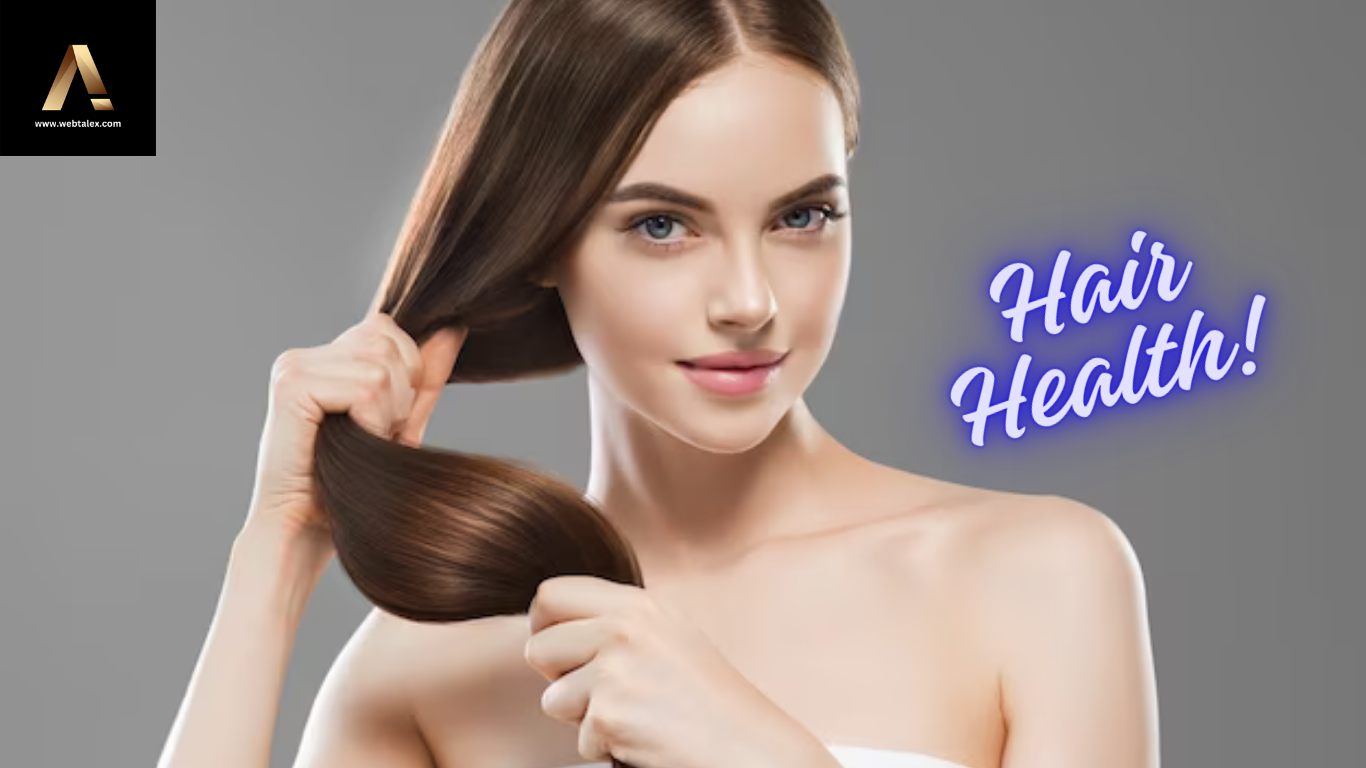Discover important guidelines and professional recommendations on how to maintain hair health. From proper vitamins to quality hair care practices, learn everything you want to keep your hair looking great.
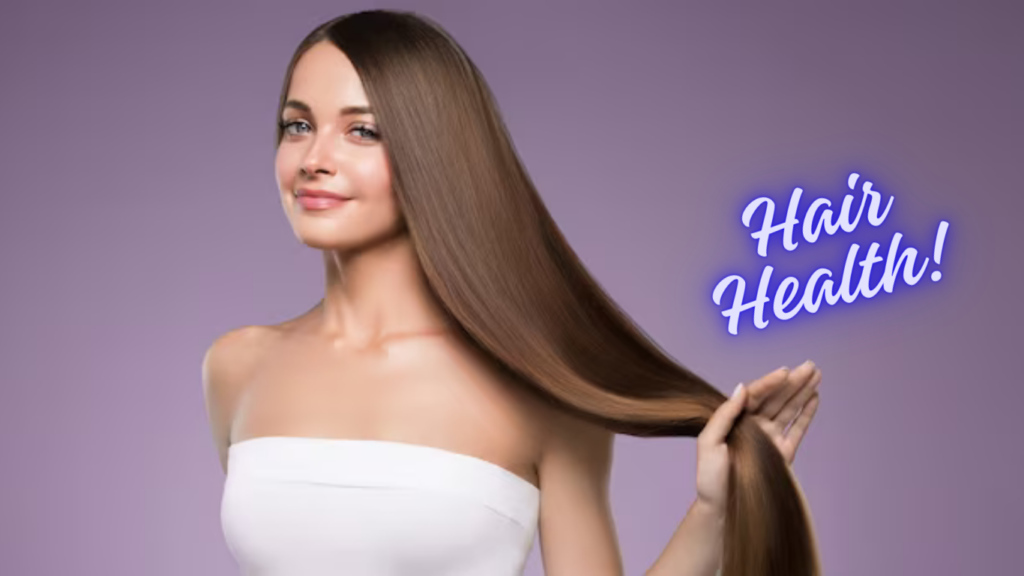
Hair health is not only a matter of aesthetics; it reflects your overall well-being. This comprehensive guide delves into the numerous factors of maintaining hair fitness, imparting insights and practical recommendations to ensure your locks stay sturdy, shiny, and healthy.
Hair Health: Understanding Its Structure and Importance for Proper Care
| Aspect | Details |
|---|---|
| Overview | Hair: More Than a Style Statement |
| Importance of Hair Structure | Understanding the hair’s shape is crucial for its proper care and maintenance. |
| Composition | Hair is typically composed of keratin, a sort of protein, along with lipids, water, and trace minerals. |
| Hair Structure | Cuticle: The outermost layer, providing strength and protection. Cortex: the middle layer, figuring out texture and color. Medulla: The innermost layer, frequently absent in finer hair. |
| The function of Hair | provide insulation and regulate body temperature. protects against environmental damage. Serves as a sensory function through nerve endings at the base. |
| Indicator of Health | Healthy hair reflects basic well-being, indicating adequate nutrients and fitness popularity. |
| Role in Personal Grooming | Hair is a crucial element of personal appearance and grooming, often reflecting individual personality and style. |
Daily Healthy Hair Care: Essential Practices for Optimal Hair Health
A comprehensive daily hair care routine is pivotal to keeping your hair healthy. It encompasses numerous practices that cater to one-of-a-kind hair types and needs. Here’s a detailed guide with tips and useful information:
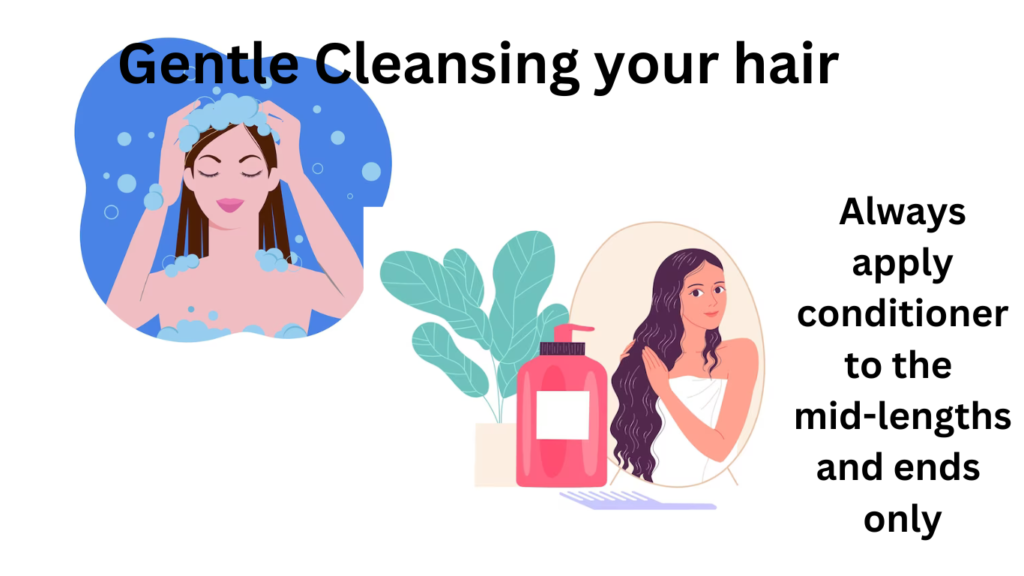
- Gentle Cleansing:
- Frequency: The frequency of hair washing depends on your hair kind. Oily hair can also require more common washing, while dry or curly hair can also gain from fewer unusual washes.
- Choosing Shampoos: Opt for sulfate-unfastened shampoos for gentler cleaning.
- Technique: Apply shampoo primarily to the scalp and massage gently with fingertips to cleanse oil and buildup. Rinse thoroughly.
- Effective Conditioning:
- Purpose: Conditioners help restore moisture and guard hair from environmental damage.
- Application: Always apply conditioner to the mid-lengths and ends only; don’t use it on the scalp. Before rinsing, rinse it after a few minutes.
- Types: Use depart-in conditioners for additional hydration, mainly for dry or curly hair.
- Scalp Care:
- Scalp Massages: Regular scalp massages can stimulate blood circulation, promoting hair growth.
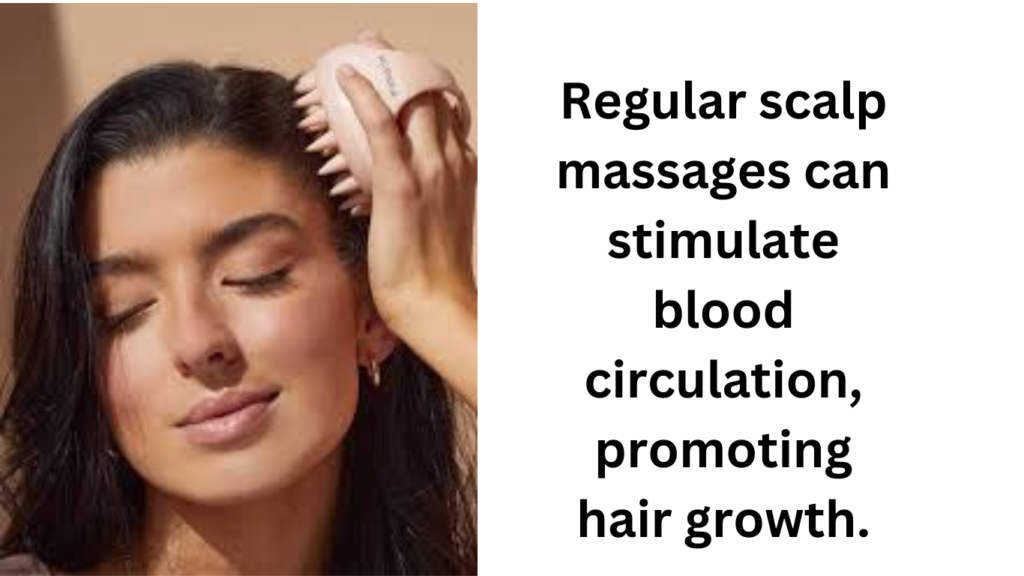
Avoid Harsh Chemicals: Products with harsh chemicals can irritate the scalp. Choose gentle, natural-based products.
- Hair Drying:
- Avoid excessive heat. Air-dry your hair every time it is viable. If using a hairdryer, maintain it on low heat by putting and holding it at a distance from your hair.
- Gentle Drying: To reduce friction, dry hair with a soft towel or microfiber material.
- Regular Trimming:
- Benefits: Regular trims save you cut-up ends and promote healthy hair growth.
- Frequency: Trim every 6–8 weeks to hold hair fitness and fashion.
- Minimizing Heat and Chemical Exposure:
- Heat Styling: Use warmness-protectant sprays and limit using a warmness-styling system.
- Chemical Treatments: Reduce the frequency of chemical treatments like coloring, perming, or straightening. or straightening.
- Nighttime Hair Care:
- Protective Hairstyles: Loose braids or a silk bonnet can shield hair from tangling and breakage whilst slumbering.
- Silk Pillowcases: To lessen hair friction and prevent breakage, consider the use of silk or satin pillowcases.
- Hydration and Nutrition:
- Diet: A balanced diet rich in nutrients, minerals, and proteins supports hair fitness.
- Hydration: Drinking masses of water helps preserve healthy hair and scalps.
- Tailored Products for Different Hair Types:
- Curly Hair: Use hydrating and defining merchandise particular to curly hair.
- Fine Hair: Choose lightweight volumizing products.
- Colored Hair: Use merchandise designed for color-handled hair to save you from fading.
- Avoiding Harsh Environmental Factors:
- Sun Protection: Use hair merchandise with UV protection to protect your hair from sun harm.
- Cold Weather: In cold weather, cover your hair or use merchandise that offers extra moisture.
Implementing those practices as a part of your regular hair care will significantly contribute to your hair’s long-term fitness and energy. Remember, the secret is consistency and deciding on the proper merchandise and techniques for your precise hair type.
Ten Hair-Care Routines That Can Cause Damage
1. Shampooing Techniques: Apply the shampoo to the scalp rather than the hair lengths to avoid damage.
- Changes for Prevention: Focus on massaging shampoo into the scalp; no longer the period of your hair. This method targets dust and oil on the roots, even preventing excessive dryness along the hair shaft that may cause breakage and cut-up ends.
- Tips: Suggest gentle massaging techniques and recommend warding off harsh chemicals.
Skipping Conditioner
- Changes for Prevention: You must use conditioner after shampooing. Conditioner facilitates topping off moisture and important oils, lowering frizz and breakage. For quality effects, choose a conditioner according to your hair type.
Rough Towel Drying
- Changes for Prevention: Lightly pat it dry to soak up moisture, Instead of rubbing your hair with a towel, A soft microfiber towel or an old t-shirt can further minimize friction, which can cause frizziness and breakage.
- Brushing Wet Hair
- Changes for Prevention: Wet hair is more liable to damage. Use a huge-teeth comb to gently detangle your hair, beginning from the pointers and running your way up to avoid unnecessary stress on the hair.
- Excessive Heat Styling
- Changes for Prevention: Try to limit the use of heat styling tools. When using them, follow a warmth protectant on your hair and pick out the powerful temperature setting to limit damage.
- Using Strong-Hold Styling Products
- Changes for Prevention: Avoid products that promise long-lasting preservation as they may be dried. Choose lighter merchandise that offers maintenance without sacrificing hair health.
- Tight Hairstyles
- Changes for Prevention: Wear loose, comfortable hairstyles. Tight hairstyles can cause tension on the scalp, leading to hair breakage and even hair loss over time.
- Wearing Weaves and Extensions
- Changes for Prevention: If you wear weaves or extensions, make sure they are not too tight. Give your hair regular breaks from these styles, and keep your scalp and natural hair well-nourished and moisturized.
- Hair Coloring and Chemical Treatments
- Changes for Prevention: Less use of chemical treatments Consider balayage or ombre styles that require less renovation and cause less damage. Use top-rated, hair-friendly dyes, and aftercare is a must. Therefore, if you apply dyes, they consist of deep conditioning remedies.
- Over-Brushing or Rough Styling
- Changes for Prevention: Avoid over-brushing or pulling your hair to fashion it. Brush your hair lightly, as many times as needed for styling and detangling. This prevents stress and the breakage of the hair.
Here are some tips for promoting healthy hair growth:
Balanced Diet: Nutrition plays a crucial role in hair health. Consume a healthy eating plan rich in proteins, vitamins, and minerals, mainly the ones containing iron, zinc, vitamin E, and omega-3 fatty acids. Foods like salmon, nuts, eggs, and leafy greens are tremendous for hair growth.
Stay Hydrated: Drinking sufficient water is important for popular health, which encompasses that of your hair. Hydration enables the preservation of wholesome hair follicles and scalps.
Regular Scalp Massages: Scalp massages increase blood flow to the hair follicles, promoting hair growth. Use nourishing oils like coconut, almond, or jojoba oil to deliver benefits.
Minimize Heat Styling: Frequent use of heat styling can weaken your hair, leading to breakage and hair loss. Try to air-dry your hair and use warmth-protectant sprays while you do use warmth.
Avoid Harsh Chemicals: Be cautious of hair merchandise containing harsh chemical substances. Choose herbal or moderate hair care merchandise that is sulfate-unfastened and paraben-unfastened.
Trim Regularly: Regular trims every 6–8 weeks help take away cut-up ends and save you hair breakage.
Avoid Tight Hairstyles: Tight hairstyles can stress your hair follicles. Choose looser hairstyles to lessen the threat of hair harm and loss.
Manage stress: high-strain stages can result in hair loss. Engage in pressure-reducing sports like yoga, meditation, or regular exercise.
Limit Chemical Treatments: Frequent coloring, perming, or chemical straightening can harm your hair. Limit the remedies, and generally follow up with the right hair care.
Use Hair Supplements Wisely: While dietary supplements like biotin, vitamin D, and iron can aid hair growth, it is great to consult with a healthcare company before starting any supplement routine.
Gentle Hair Care: We must wash and brush our hair gently. Avoid brushing while wet, as hair is more susceptible to breakage.
.Protect Your Hair from the Sun’s Rays: Prolonged exposure to the sun’s rays can damage your hair. Use hats or products with UV safety to shield your hair from dangerous rays.
Remember, hair growth is based on genetic elements and everyday health, so retaining a healthy way of life is prime. If you revel in considerable hair loss or loss of growth, it’s far beneficial to seek recommendations from a healthcare expert for personalized recommendations.
Essential Nutrients for Hair Health
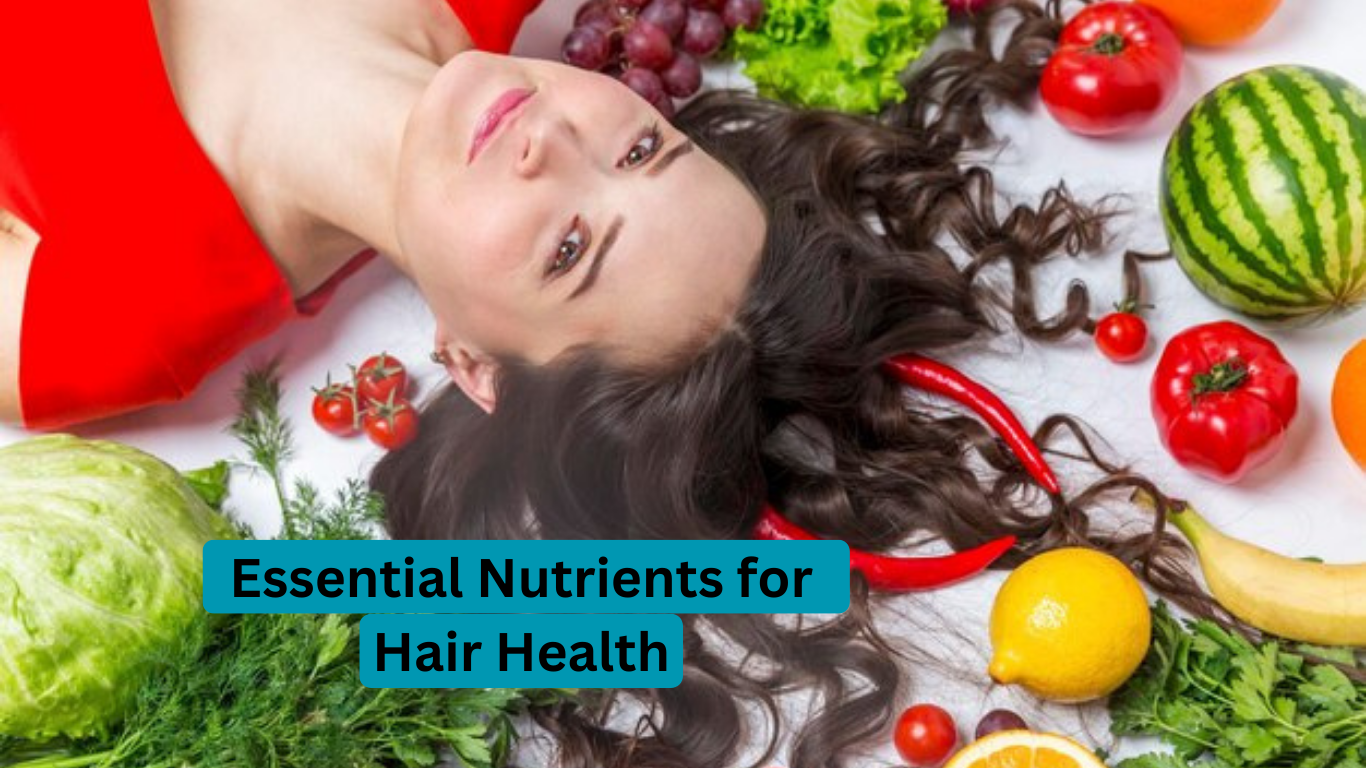
| Nutrient | Benefits of Hair Health | Food Sources |
|---|---|---|
| Vitamin E | Enhances scalp circulation and hair growth | Almonds, spinach, sweet potatoes, and avocados |
| Omega-3 Fatty Acids | Promotes hair growth, prevents hair loss, and adds luster | Salmon, mackerel, flaxseeds, and walnuts |
| Biotin (Vitamin B7) | Strengthens hair and reduces hair fall | Eggs, nuts, whole grains, and cauliflower |
| Vitamin A | Sebum production for scalp hydration | Carrots, sweet potatoes, pumpkins, and kale |
| Zinc | Hair tissue growth and repair | Oysters, beef, pumpkin seeds, and lentils |
| Iron | Prevents hair loss, especially in women | Spinach, red meat, lentils, and quinoa |
| Protein | Essential for hair growth and strength | Chicken, turkey, fish, dairy products, legumes |
| Vitamin C | Collagen production, antioxidant | Citrus fruits, strawberries, bell peppers, and guavas |
| Selenium | Prevents hair loss due to stress and damage | Brazil nuts, tuna, ham, and enriched foods |
| Vitamin D | Stimulates hair follicles and promotes hair growth | Fatty fish, cod liver oil, fortified foods, and sunlight exposure |
Each nutrient indexed performs a vital function in preserving hair fitness, and incorporating plenty of these food sources into your diet can substantially increase your hair growth, electricity, and normal health.
Experts Insights: Recommendations from Dermatologists and Trichologists on Hair Care

As the dedicated voice of Webtalex.com, I’m committed to delivering the latest and most inspiring content in beauty and health. I aim to keep you informed on the newest trends and holistic wellness, helping you look and feel your best. Join me for insightful beauty techniques, wellness tips, and much more to enrich your lifestyle.

